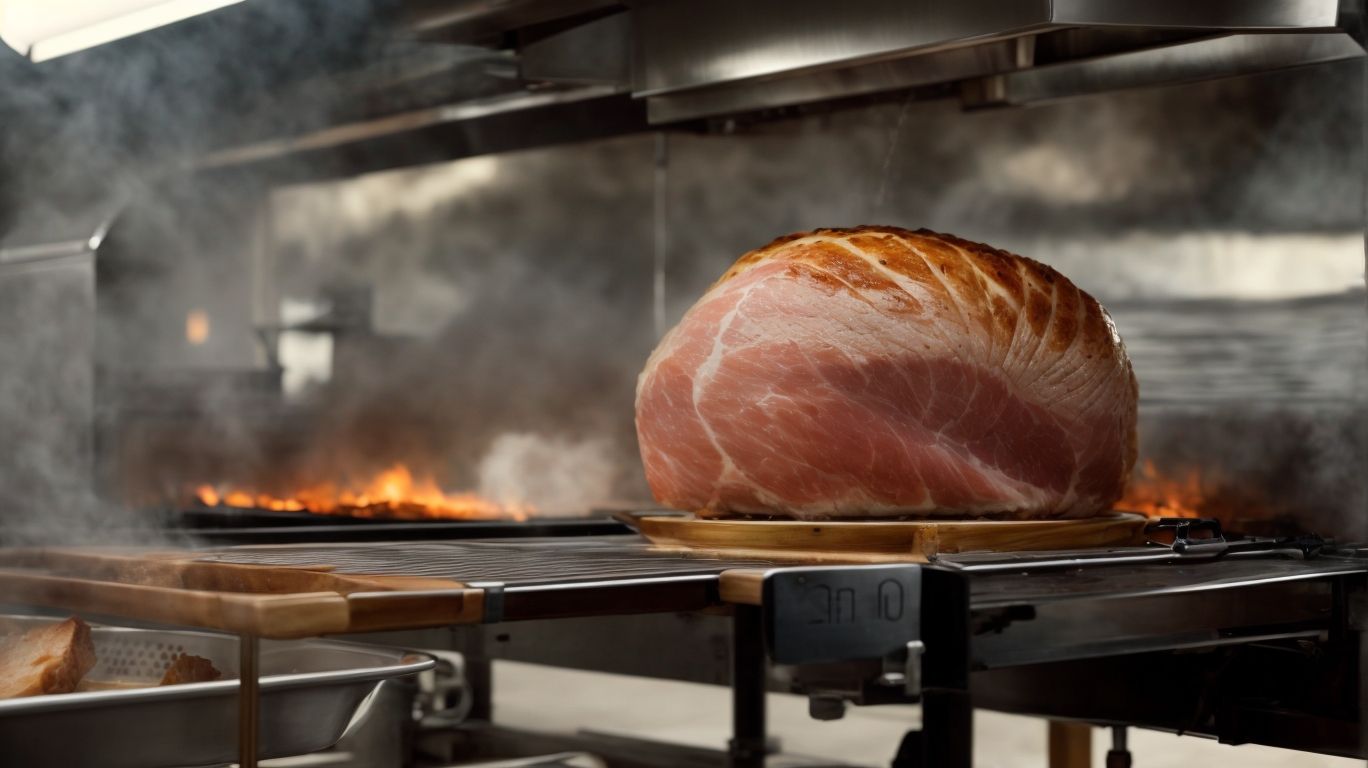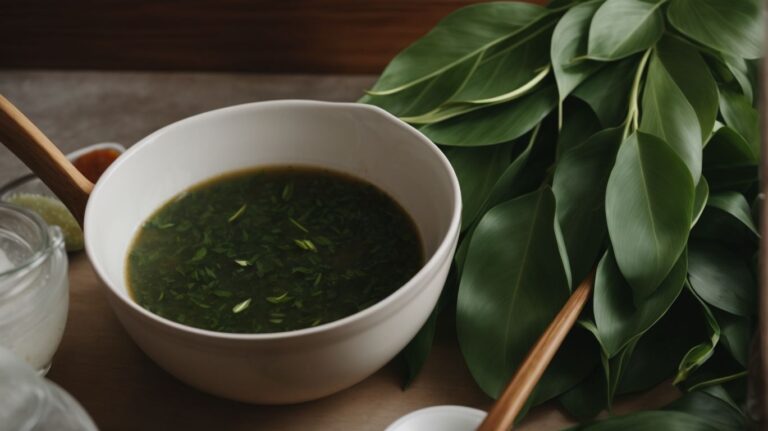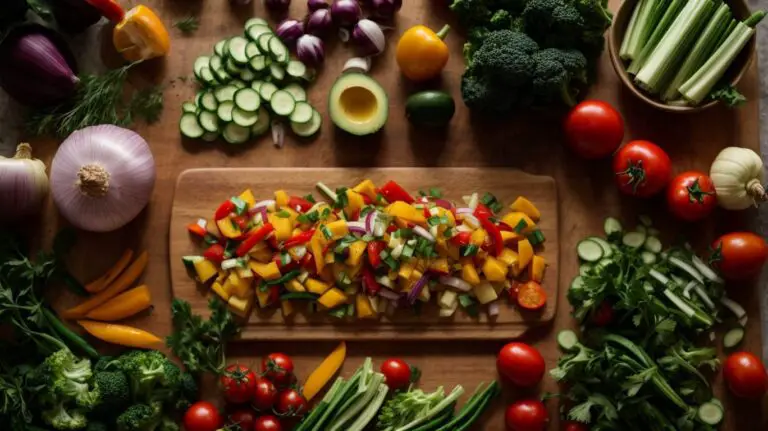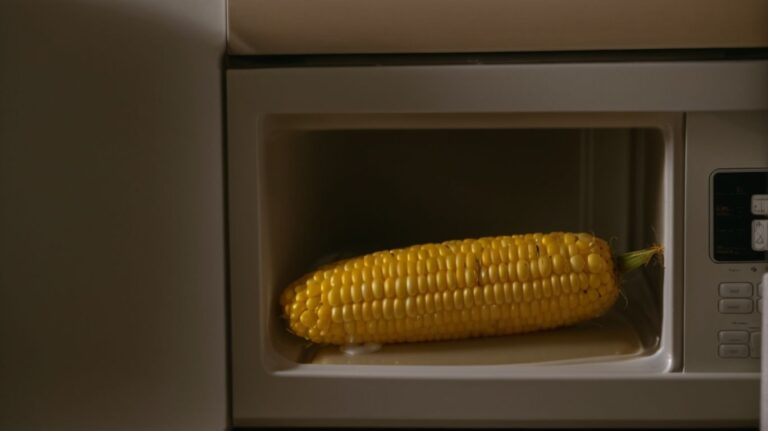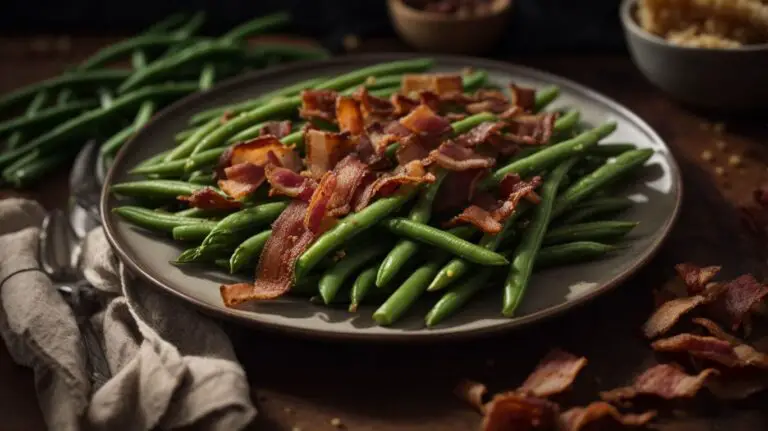How to Cook a Large Bone in Ham?
Are you looking to impress your guests with a delicious, juicy bone-in ham for a special occasion?
In this article, we will cover everything you need to know about cooking a large bone-in ham to perfection.
From choosing the right size and type of ham to selecting the best cooking method, we’ve got you covered.
Stay tuned as we guide you through the preparation steps, cooking techniques, and serving tips to ensure your bone-in ham turns out absolutely mouthwatering.
Let’s get cooking!
Key Takeaways:
What is a Bone-in Ham?
A bone-in ham refers to a cut of ham that still contains the bone, adding flavor and moisture to the meat during the cooking process.
This method of cooking with the bone intact is widely preferred by culinary experts and home cooks alike due to the numerous benefits it offers.
When a ham is cooked with the bone, it not only imparts a rich, savory flavor to the meat but also helps in retaining moisture, ensuring that the ham remains tender and juicy. The bone acts as a natural heat conductor, distributing heat evenly throughout the meat, resulting in a more flavorful and succulent dish. The presence of the bone helps in enhancing the overall texture of the ham, contributing to a more satisfying dining experience.
How to Choose the Right Size and Type of Bone-in Ham?
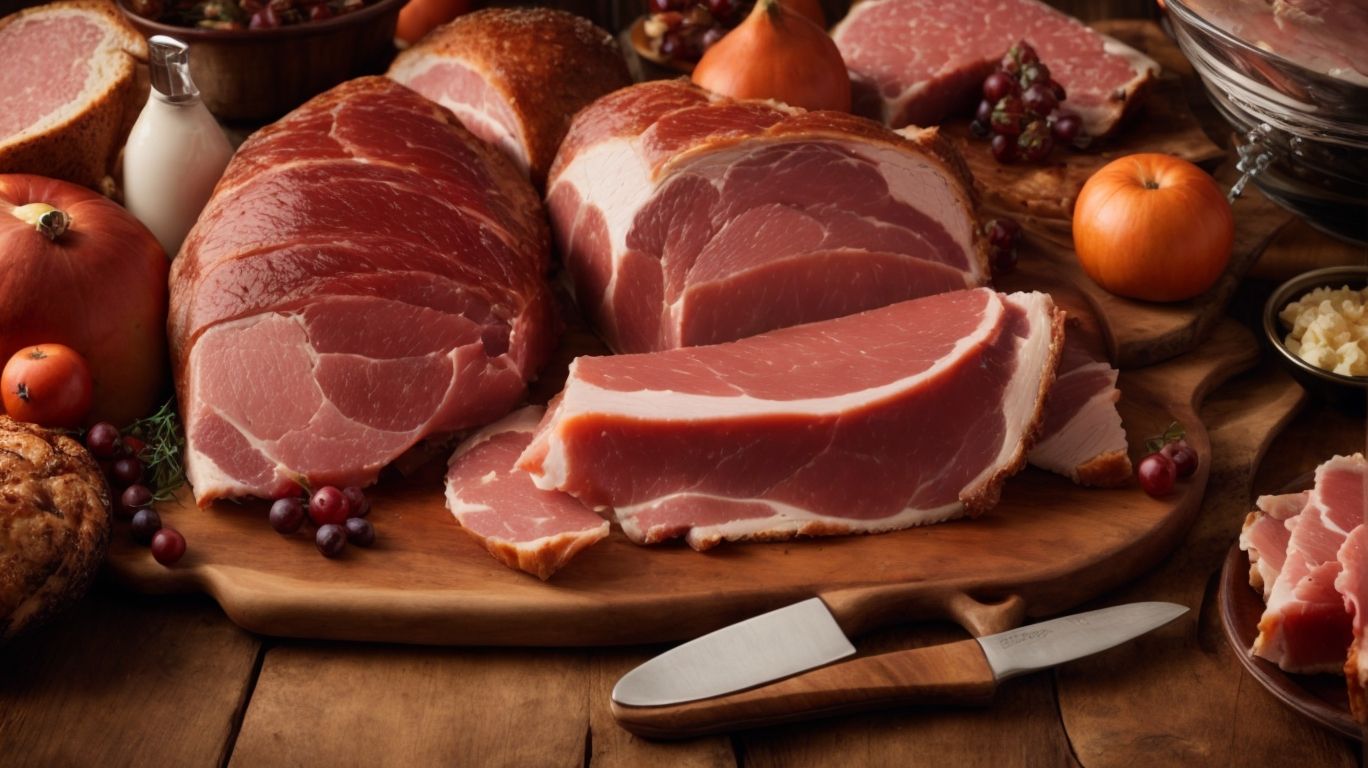
Credits: Poormet.Com – Thomas Wilson
Selecting the ideal size and type of bone-in ham involves considering factors such as the number of family members, preferred flavors, and possibly opting for locally sourced hams from farms.
For a smaller family, a half ham could be sufficient, while a whole ham is more suitable for larger gatherings or if you enjoy leftovers. Regarding flavor, some may prefer a smoky taste, while others might opt for a sweeter glaze.
Local farms often offer hams that are fresher and of higher quality than mass-produced varieties. If you’re planning a special occasion, consider a spiral-cut ham for easy serving or a shank-end ham for a traditional presentation. Remember to check for any special dietary considerations, such as low-sodium options or organic certifications, based on your preferences.
What is the Difference Between a Spiral Cut and Traditional Bone-in Ham?
When comparing a spiral cut ham to a traditional bone-in ham, the main distinction lies in the slicing technique used; spiral hams are pre-sliced in a continuous spiral pattern, making serving and carving easier.
On the other hand, traditional bone-in hams have not been pre-sliced, requiring the person serving to carve the ham from the bone. This method offers a more rustic and traditional presentation that can be appealing for certain occasions.
The spiral cut ham, with its uniform slices, often results in a neater presentation that showcases each slice beautifully. However, the traditional bone-in ham can offer a more robust flavor due to the cooking method, as the bone helps to enhance the overall taste of the ham.
What Ingredients Do You Need to Cook a Large Bone-in Ham?
To cook a large bone-in ham, essential ingredients include the ham itself, a flavorful glaze such as a brown sugar glaze, and aromatic spices like cloves for added taste.
When preparing a tasty glaze for your ham, consider ingredients like honey, mustard, pineapple juice, or maple syrup to create a unique flavor profile.
- An alternative glaze could be a combination of cranberry sauce and Dijon mustard for a tangy kick.
- For seasoning options, you can experiment with herbs like thyme, rosemary, or garlic powder to complement the sweetness of the glaze.
Enhancing the natural flavors of the ham with the right combination of glaze and spices is key to achieving a mouthwatering dish that will impress your guests.
What Equipment Do You Need to Cook a Large Bone-in Ham?
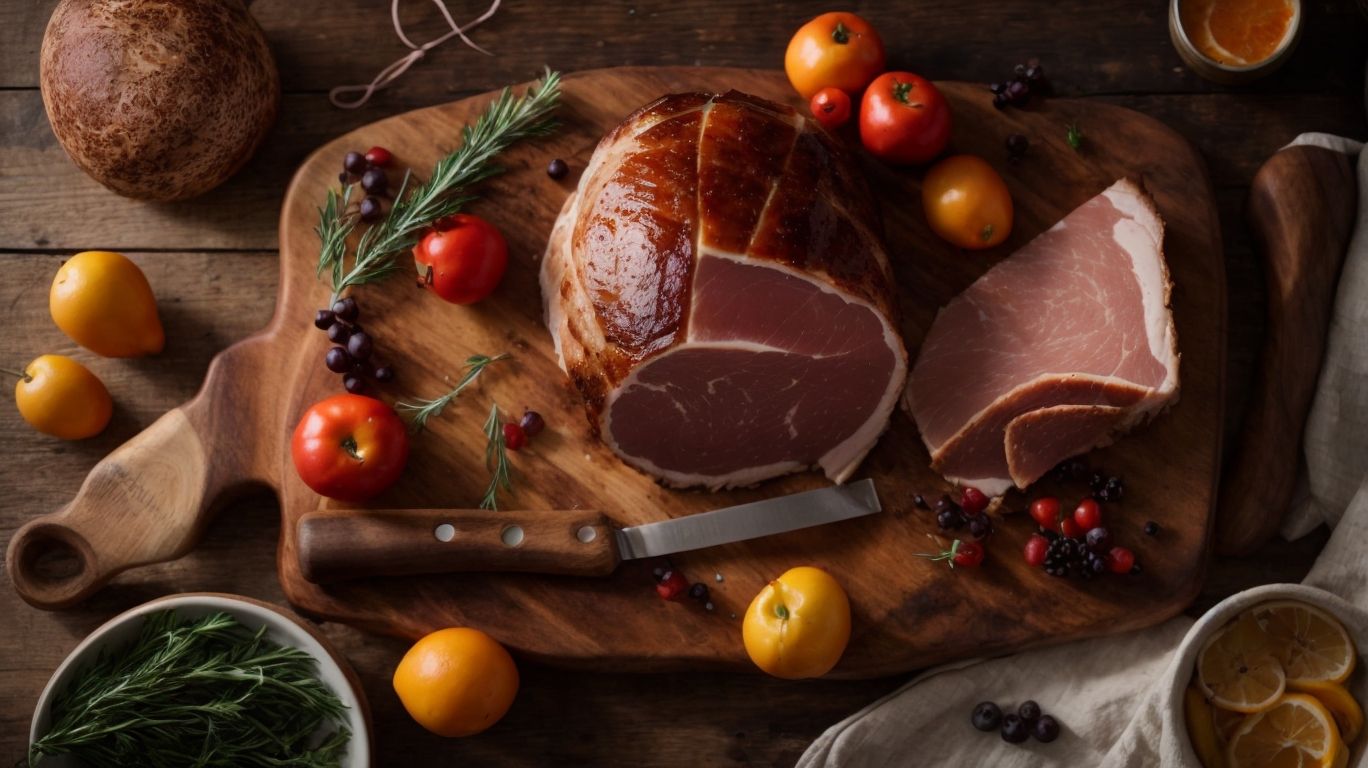
Credits: Poormet.Com – Ronald Perez
Cooking a large bone-in ham necessitates the use of specific equipment such as an oven, slow cooker, or other kitchen tools to ensure the ham is cooked to perfection.
When selecting an oven for cooking a ham, opt for one that is spacious enough to accommodate the size of the ham and has precise temperature controls to guarantee even cooking.
A slow cooker can be a convenient alternative, especially if you prefer a hands-off cooking approach. Simply place the ham in the slow cooker, add your preferred seasonings, set the timer, and let the slow cooker work its magic to produce tender, succulent ham.
To complement your primary cooking equipment, gather essential kitchen utensils like a sharp knife for scoring the ham, a basting brush for glazing, and a meat thermometer to ensure the ham reaches the desired internal temperature.
Preparation Steps for Cooking a Large Bone-in Ham
The process of preparing a large bone-in ham involves steps such as thawing the ham if frozen, scoring the surface for optimal flavor absorption, and determining the appropriate cooking time based on the weight and type of ham.
Once the ham has been properly thawed to ensure even cooking, it is essential to score the surface using a sharp knife in a crisscross pattern. This not only enhances the presentation but also allows the flavors to penetrate the meat more effectively during the cooking process.
- Estimating the cooking time is crucial to prevent undercooking or overcooking. A general rule of thumb is to calculate approximately 20 minutes per pound at 325°F, but always refer to the specific guidelines for your particular ham type and size.
Handling raw ham with care is paramount to prevent any cross-contamination. Make sure to wash your hands thoroughly after handling the raw meat and sanitize any surfaces that come into contact with it. To ensure the ham is cooked thoroughly, use a meat thermometer inserted into the thickest part without touching bone, aiming for an internal temperature of at least 145°F for safety.
How to Thaw a Frozen Bone-in Ham?
Thawing a frozen bone-in ham requires placing it in the refrigerator with proper wrapping to prevent moisture loss, allowing ample time for it to defrost gradually.
When thawing a bone-in ham, the refrigerator is the ideal environment for a slow and controlled thawing process. This cold temperature helps maintain the freshness and quality of the ham by preventing the growth of harmful bacteria that thrive in warmer conditions.
- It is crucial to keep the ham wrapped tightly to avoid exposure to air, which can cause moisture loss and lead to dryness.
- Checking the refrigerator temperature is also important to ensure it stays consistently at or below 40°F to keep the ham safe as it thaws.
- Patience is key during the thawing process; rushing it may result in uneven thawing and potential food safety risks.
How to Score the Ham for Optimal Flavor?
Scoring the surface of the ham with a sharp knife in a criss-cross pattern is a technique that enhances flavor absorption, allowing the glaze to penetrate deeper into the meat during cooking.
This method not only intensifies the overall flavor profile of the ham but also ensures a more even distribution of the glaze, resulting in a harmonious combination of sweet and savory notes in every bite. To effectively score a bone-in ham, place it on a cutting board with the fat side facing up. With a sharp knife, make diagonal cuts about 1 inch apart across the surface, being careful not to slice too deeply into the meat. Turn the ham and repeat the cuts in the opposite direction to create a criss-cross pattern.
How to Glaze the Ham for a Delicious Finish?
Applying a glaze mixture, which may include ingredients such as honey for sweetness and a secret blend of spices, is the final step in preparing a bone-in ham to achieve a delicious and flavorful finish.
When applying the glaze, ensure that it is at room temperature to allow for smooth spreading. A brush or spoon can be used to evenly coat the ham, making sure that every inch is covered for consistent flavor throughout. Consider scoring the surface of the ham slightly to help the glaze penetrate and infuse into the meat, enhancing its taste and texture.
Cooking Methods for a Large Bone-in Ham
When cooking a large bone-in ham, various methods such as baking in the oven, grilling on the BBQ, smoking on a smoker, or slow cooking in a crockpot can be utilized to achieve different flavors and textures.
Each method offers a unique way to infuse flavors into the ham.
- Baking in the oven allows for even cooking and caramelization;
- Grilling on the BBQ gives a smoky charred taste;
- Smoking on a smoker imparts a rich, aromatic flavor;
- Slow cooking in a crockpot results in tender, juicy meat.
Consider your preferred taste profile and the equipment you have at hand when choosing the best cooking method for your bone-in ham.
Baking in the Oven
Baking a bone-in ham in the oven is a popular method that involves setting the appropriate temperature, covering the ham with foil, and monitoring the cooking time to ensure it reaches the desired internal temperature for optimal juiciness.
It is crucial to preheat the oven to 325°F before placing the ham inside. Once the ham is in the oven, cover it loosely with foil to prevent excessive browning. Remember to baste the ham occasionally with its own juices to enhance flavor and moisture. The cooking duration varies depending on the size of the ham; generally, you should allow about 15-20 minutes per pound. Use a meat thermometer to check the internal temperature, ensuring it reaches 140°F for proper cooking. This meticulous monitoring guarantees a succulent and flavorful ham for your dining pleasure.
Grilling on the BBQ
Grilling a bone-in ham on the BBQ imparts a distinct smoky flavor and is an excellent choice for outdoor gatherings, barbecues, or events where a crowd-pleasing dish is desired.
When grilling a bone-in ham, the heat from the BBQ caramelizes the sugars in the meat, creating a delicious glaze that enhances its natural sweetness. To achieve the perfect char and smokiness, make sure to preheat your grill and monitor the temperature throughout the cooking process. Basting the ham with a flavorful marinade or glaze not only adds moisture but also infuses it with additional layers of taste.
Grilling a bone-in ham allows you to add subtle smoky undertones that complement the savory richness of the meat. This cooking technique transforms a simple ham into a centerpiece dish that can feed a large gathering effortlessly. The versatility of grilling lets you play with different seasonings and wood chips to customize the flavor profile based on your preferences.
Smoking on a Smoker
Smoking a bone-in ham using a smoker introduces rich, smoky flavors and requires a specialized technique to control the smoking process, resulting in a uniquely flavored and aromatic dish.
For achieve that perfect balance of smokiness and tenderness, it is crucial to pay attention to several key factors during the smoking process. One of the critical aspects to consider is the smoking time. Controlling the duration of smoking plays a significant role in imparting the desired depth of flavor without overpowering the meat. The choice of wood for smoking can greatly influence the final taste profile of the ham. Different types of wood, such as hickory, apple, or maple, can infuse distinct flavors, allowing you to customize the profile to your preference.
Slow Cooking in a Crockpot
Utilizing a crockpot for slow cooking a bone-in ham allows for gentle heating over an extended period, resulting in tender, juicy meat that absorbs flavors well, making it a convenient method for preparing a delicious meal.
One major benefit of using a slow cooker for ham is that the gentle heat helps break down the connective tissues in the meat, resulting in a more tender texture compared to other cooking methods.
The slow cooking process allows the flavors from seasonings or glazes to seep into the ham thoroughly, ensuring a delicious and well-infused final dish.
When seasoning a ham for the slow cooker, consider using a combination of spices like cloves, mustard, brown sugar, or even a touch of pineapple juice for a sweet and savory flavor profile.
Remember to adjust the cooking time based on the size of the ham and the specific settings of your slow cooker to achieve optimal results. For a bone-in ham, a general guideline is to cook on low for 6-8 hours per pound, ensuring a moist and flavorful outcome.
How to Tell When a Large Bone-in Ham is Done?
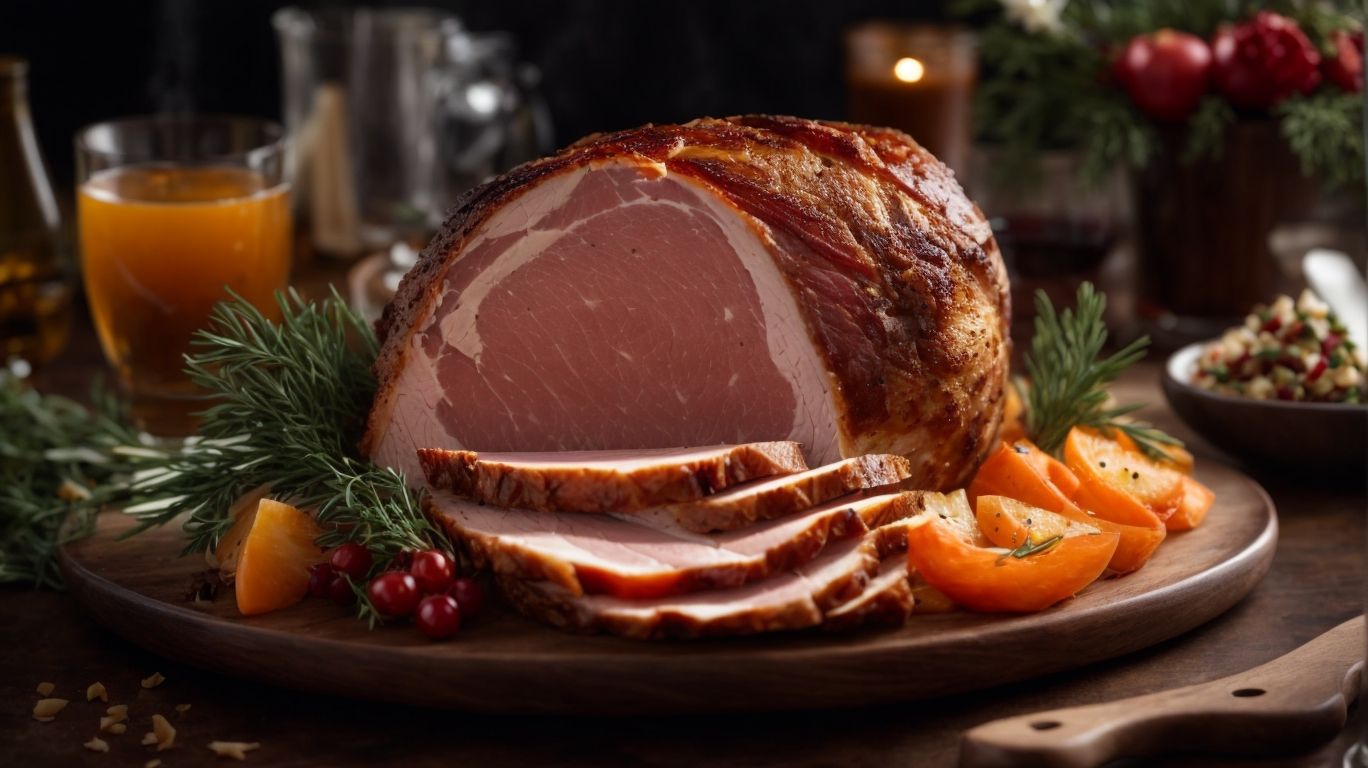
Credits: Poormet.Com – Kevin Campbell
Determining if a large bone-in ham is cooked to perfection involves checking the internal temperature with a meat thermometer and ensuring it reaches the recommended safe cooking temperature for the specific type of ham being prepared.
When using a meat thermometer, insert it into the thickest part of the ham without touching the bone for the most accurate reading. A digital thermometer is highly recommended for precise measurements. For a fully cooked ham, the internal temperature should reach 145°F, while a partially cooked ham requires a temperature of 160°F. It’s crucial to allow the ham to rest after cooking to let the juices redistribute, ensuring a moist and flavorful result.
Serving and Storing Tips for a Large Bone-in Ham
When serving a large bone-in ham, consider carving techniques, presentation ideas for impressing a crowd or family gathering, tips for storing leftovers, and effective methods for reheating pre-cooked ham to maintain its flavor and moisture.
For carving, start by placing the ham on a sturdy cutting board and using a sharp knife to slice perpendicular to the bone for even cuts. To impress guests, a beautifully adorned platter with fresh herbs or fruits can elevate the presentation. Leftovers can be stored in an airtight container in the refrigerator for up to a week, or in the freezer for longer preservation. To retain the ham’s juicy texture during reheating, use methods like oven baking with a flavorful glaze or gently heating slices on a skillet.
Frequently Asked Questions
How to Cook a Large Bone in Ham?
Cooking a large bone in ham may seem intimidating, but with the right techniques and tips, it can be a breeze. Here are some frequently asked questions and answers to help you cook the perfect ham for your next gathering.
What is the best way to prepare a large bone in ham?
The best way to prepare a large bone in ham is to start by removing any excess fat and scoring the surface of the ham. This will help the glaze and seasoning to penetrate the meat and add flavor. After that, you can follow your preferred cooking method, such as baking, roasting, or grilling.
How long does it take to cook a large bone in ham?
The cooking time for a large bone in ham depends on its weight and the cooking method. As a general rule, it takes about 15-20 minutes per pound to cook a ham. However, it is always recommended to use a meat thermometer to ensure the internal temperature reaches 145°F for optimal safety and taste.
What is the best temperature to cook a large bone in ham?
The best temperature to cook a large bone in ham is 325°F. This allows the ham to cook evenly and retain its moisture. If you’re using a glaze, you can increase the temperature to 375°F for the last 15-20 minutes to caramelize the glaze.
Do I need to baste the ham while cooking?
Basting the ham while cooking is not necessary but can add more flavor and moisture to the meat. If you’re using a glaze, you can baste the ham with it every 20-30 minutes for a more intense flavor. However, be careful not to over-baste as it can cause the glaze to burn.
How do I know when the ham is done cooking?
The best way to know if your ham is done cooking is by using a meat thermometer. The internal temperature should reach 145°F before you take it out of the oven. You can also check the ham’s tenderness by inserting a fork or knife into the thickest part of the meat. If it slides in easily, the ham is likely done.

